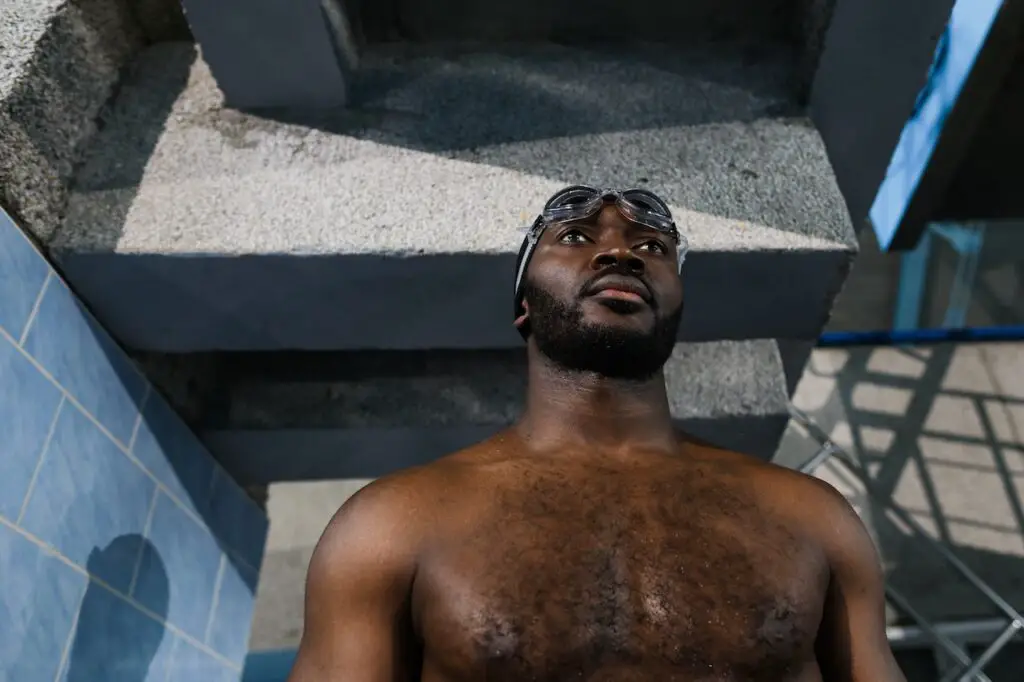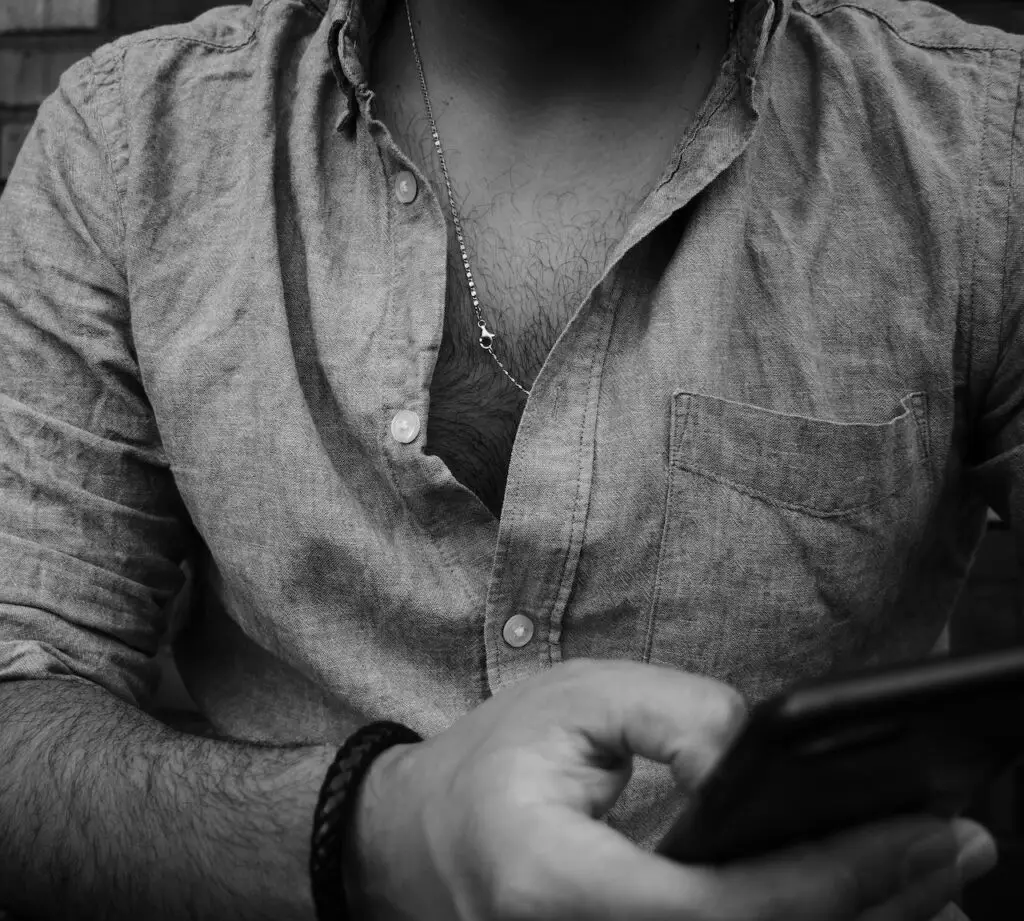When it comes to attraction and seduction, there are various factors at play. One intriguing element that has garnered attention over the years is chest hair. While personal preferences and cultural norms differ, chest hair has been associated with masculinity, virility, and attractiveness in many societies. In this article, we will explore the science behind the allure of chest hair and why it has the power to make you irresistible.
Historical and Cultural Perspectives on Chest Hair
The Symbolism of Chest Hair Throughout History
The symbolism of chest hair throughout history has been deeply rooted in notions of masculinity, power, and attractiveness. In ancient civilizations like Egypt, Greece, and Rome, chest hair was revered as a sign of strength and courage. It was associated with the qualities of a mature and virile man.
Even in modern times, cultural practices and religious beliefs have continued to attach significance to chest hair, considering it a symbol of wisdom, authority, and sexual prowess. The historical symbolism of chest hair has contributed to its enduring allure and appeal in various cultures across the globe.
Chest Hair in Different Cultures
Chest hair holds different cultural perspectives and preferences across the globe. In some cultures, such as Mediterranean and Middle Eastern societies, chest hair is embraced as a desirable and attractive characteristic. It is seen as a symbol of masculinity, virility, and maturity.
On the other hand, Western cultures have witnessed a shift in preferences, where a smoother and hairless chest has become more popularized. These cultural variations reflect the influence of societal norms, media portrayals, and evolving beauty standards, shaping the perception of chest hair in different regions and communities.
Related: Beard Oil: Unleash Your Inner Alpha and Command Attention

The Biology of Chest Hair
The Role of Testosterone
The role of testosterone is pivotal in understanding the growth and presence of chest hair. Testosterone, the primary male sex hormone, plays a crucial role in initiating and regulating the development of secondary sexual characteristics, including the growth of body hair. Higher levels of testosterone in men stimulate the hair follicles, leading to the growth of chest hair.
Thus, the presence or absence of chest hair can serve as an indicator of an individual’s hormonal balance. Testosterone not only influences the quantity but also contributes to the texture and thickness of chest hair. Understanding the role of testosterone provides insight into the biological factors underlying chest hair growth and its significance in terms of masculinity and attractiveness.
Chest Hair Growth Patterns
Chest hair growth patterns exhibit fascinating variations among individuals. The growth and distribution of chest hair are influenced by a combination of genetic and hormonal factors. Some men naturally possess a dense coverage of chest hair, with hair follicles evenly spread across the chest area. Others may have a sparser distribution, with hair concentrated in specific regions. These patterns are determined by genetic predisposition and hormonal levels, including testosterone.
Additionally, chest hair growth can also be influenced by factors such as age and ethnicity. It’s worth noting that symmetrical chest hair patterns have been associated with higher perceived attractiveness, as symmetry is often linked to genetic fitness. Understanding the diversity of chest hair growth patterns adds to the complexity of its role in human attractiveness and individual self-perception.
Attractiveness and Genetic Fitness
The presence of chest hair has been linked to perceptions of attractiveness and genetic fitness. Studies have indicated that individuals with moderate amounts of chest hair are generally considered more attractive than those with excessive or minimal amounts. This association stems from the belief that chest hair serves as a visual cue, signaling genetic fitness and reproductive potential.
Evolutionarily, individuals with healthy genetic traits are believed to possess a higher chance of passing on favorable genes to their offspring. As a result, the presence of chest hair can be seen as an indicator of robust health, fertility, and genetic diversity. These underlying biological factors contribute to the allure of chest hair and its impact on attractiveness in the eyes of potential partners.
Related: Nostalgia Overload: The Top 8 Iconic 80s Haircuts That Defined an Era

Psychological Factors in Attraction
The Power of Masculinity
The power of masculinity associated with chest hair is a captivating aspect of human attraction. Chest hair has long been intertwined with traditional notions of masculinity, exuding an aura of ruggedness, strength, and dominance. Its presence can evoke a sense of primal desire and intrigue in both men and women. The sight of a well-defined and abundant chest hair can trigger deep-rooted instincts, awakening an innate response that associates this characteristic with qualities deemed attractive in a potential mate.
The power of masculinity embodied by chest hair lies in its ability to symbolize virility, confidence, and assertiveness, qualities that have been historically valued and sought after in the realm of attraction. It taps into a deep-seated attraction mechanism, influencing perceptions and preferences in the intricate dance of seduction.
Perception of Confidence and Maturity
The perception of confidence and maturity associated with chest hair adds another layer to its allure. Chest hair is often seen as a symbol of adulthood and sexual maturity, which can convey a sense of self-assurance and emotional stability. When someone possesses a well-groomed and abundant chest hair, it can create an impression of confidence and maturity in the eyes of others.
This perception is rooted in societal beliefs and cultural norms that equate a certain level of hairiness with an advanced stage of life and experience. The presence of chest hair can thus contribute to the overall attractiveness of an individual, as it suggests a level of emotional and psychological development that can be highly appealing to potential partners.
Symbolism of Chest Hair as a Sign of Virility
The symbolism of chest hair as a sign of virility is deeply ingrained in various cultures and historical contexts. Chest hair has been associated with fertility, masculinity, and sexual prowess, making it a potent symbol of virility. The connection between chest hair and reproductive potential is rooted in the evolutionary significance of physical characteristics that signal genetic fitness.
In many cultures, an abundance of chest hair is considered a visual cue of high testosterone levels, which is linked to increased fertility and the ability to sire healthy offspring. This symbolic association between chest hair and virility creates a powerful allure, as it taps into innate desires and instincts related to procreation and the perpetuation of the species. The symbolism of chest hair as a sign of virility resonates through time, adding to its appeal and magnetism in the realm of attraction and seduction.
Related: Unleashing the Power of the Beard: How Men Can Transform Their Look with Beard Oil

Social and Media Influences
The Influence of Media and Pop Culture
The influence of media and pop culture on perceptions of chest hair cannot be overlooked. Over the years, media representations of attractiveness have played a significant role in shaping societal beauty standards. In the past, there was a trend towards a smooth and hairless aesthetic, where chest hair was often portrayed as less desirable. However, pop culture is dynamic, and beauty standards have evolved.
In recent years, there has been a shift towards embracing natural and diverse body types, including the resurgence of appreciation for chest hair. This change can be attributed to influential figures in the entertainment industry who have proudly displayed their chest hair, challenging the previously established norms. Media and pop culture have the power to shape our perceptions and preferences, contributing to the acceptance and celebration of chest hair as an attractive feature.
Changing Trends and Beauty Standards
Changing trends and beauty standards have had a significant impact on the perception of chest hair. Beauty standards are not fixed; they evolve over time as societal attitudes shift. In the past, the idealized image of male attractiveness often portrayed a smooth and hairless chest. However, in recent years, there has been a notable shift in these standards. Diverse representations of body types and a greater emphasis on individuality have challenged the notion that a hairless chest is the only desirable aesthetic.
This change has led to a reevaluation of chest hair as a natural and attractive feature. People are now embracing and celebrating their natural body hair, including chest hair, as a symbol of authenticity and self-acceptance. This evolution in beauty standards reflects a broader movement towards inclusivity and embracing diverse forms of attractiveness.
Related: The Best Men’s Grooming Products for Balding Hair
Grooming and Maintenance
Chest Hair Grooming Techniques
Chest hair grooming techniques offer individuals the option to shape and style their chest hair according to their preferences. Various techniques are available to suit different grooming goals. One popular method is trimming, which involves using clippers or scissors to maintain a desired hair length and shape. Trimming allows individuals to control the density and appearance of their chest hair while keeping it well-groomed.
Waxing is another technique that provides a longer-lasting result by removing chest hair from the root. This method can result in a smoother and hair-free chest for an extended period. Additionally, there are grooming products available, such as hair removal creams, specifically designed for chest hair removal. These creams offer a quick and convenient option for those seeking temporary hair removal. The choice of grooming technique ultimately depends on personal preferences, desired results, and individual comfort levels.
Styling Options and Preferences
When it comes to styling options and preferences for chest hair, individuals have a range of choices to express their personal style and desired aesthetic. Some individuals may prefer to embrace their natural chest hair, allowing it to grow freely without any grooming or shaping. This approach showcases a more rugged and unrefined look, emphasizing a sense of masculinity and authenticity.
On the other hand, some individuals may opt for grooming techniques to trim or shape their chest hair. This allows for a more controlled and polished appearance, where the chest hair is groomed to a desired length or pattern. It can range from a subtle trimming to create a neat and well-maintained look to more intricate designs or patterns, such as a trimmed outline or a defined trail leading down the torso. The choice of styling options is highly subjective and can vary based on personal preferences, cultural influences, and current fashion trends. Ultimately, it is a way for individuals to express their unique style and showcase their desired image.
Conclusion
In the realm of attraction and seduction, chest hair has a unique allure. Its symbolism, biological associations, and cultural influences make it a feature that holds significance for many individuals. Whether one embraces their natural chest hair or chooses to groom it, the appeal of chest hair lies in its ability to evoke feelings of masculinity, confidence, and genetic fitness. So, embrace your chest hair or admire it in others, for it is an element of seduction that has stood the test of time.
FAQs
Does everyone have chest hair?
No, not everyone has chest hair. The growth of chest hair varies among individuals and is influenced by genetics and hormonal factors. Some people may have very little chest hair or none at all.
Can chest hair be a turn-off for some people?
Yes, personal preferences when it comes to physical attractiveness can vary. While chest hair is often associated with masculinity and attractiveness, some individuals may prefer a smoother or hairless chest. It ultimately depends on individual tastes and cultural influences.
Is there a preferred chest hair length for attractiveness?
There is no universally preferred chest hair length for attractiveness. Preferences can vary greatly among individuals. Some may prefer a well-groomed and trimmed look, while others may find a more natural and abundant chest hair appealing. It’s important to remember that attractiveness is subjective and can differ from person to person.
Are there any health implications associated with chest hair?
In general, chest hair itself does not have direct health implications. However, excessive hair growth in certain areas of the body, including the chest, could be a symptom of underlying hormonal conditions such as polycystic ovary syndrome (PCOS) in women or hormonal imbalances in men. If you have concerns about excessive hair growth or other related symptoms, it’s best to consult with a healthcare professional.
Can women find chest hair attractive?
Yes, some women find chest hair attractive. Attraction is a highly individual and subjective experience. While preferences can vary among individuals, there are women who appreciate the masculinity and ruggedness that chest hair can symbolize. It’s important to remember that beauty standards and preferences are diverse and can differ from person to person.

